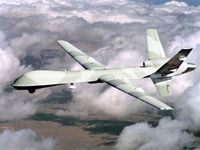
The U.S. government is seeking ideas for creating “sense and avoid” technologies so unmanned aircraft could safely operate in the National Airspace System. The Office of Naval Research issued a request for proposals last week, noting that it is “increasingly important” that Unmanned Air Systems (UAS) become capable of sharing airspace with commercial and military aircraft. “The UAS must not interfere with manned aircraft operations, and must be relied upon to strictly observe the ‘Right of Way Rules’ developed for manned aviation platforms,” the ONR said. The UAS must be able to sense even aircraft that have no transponders, TCAS, or other collision-avoidance systems, including gliders and balloons. Also last week, FAA Administrator Randy Babbitt told the Aerospace Industries Association he believes unmanned aircraft systems are “the way of the future.” However, as of today, UAS “are not ready for seamless or routine use yet in civilian airspace. … we can’t give you the thumbs up.” Babbitt said the number of UAS operations allowed in civilian airspace has tripled since 2007, and in the last year, there were about 20,000 such flights totaling about 2,500 hours.
He also said the FAA is working on an NPRM for small UAS that will define standards for routine commercial operations, and the agency is working with the Department of Defense to revise its agreement regarding “critical access” to the airspace system. The ONR is proposing to spend up to $7 million on the sense-and-avoid research proposals. The Air Force also recently put out a request to fund research into see-and-avoid technologies for UAS.


































